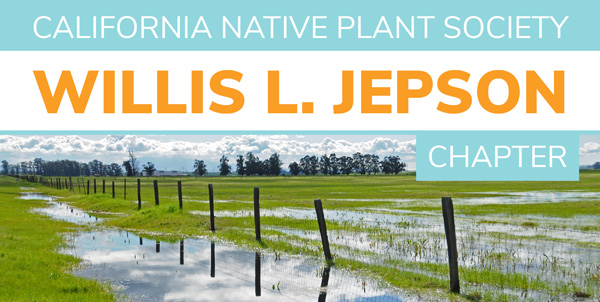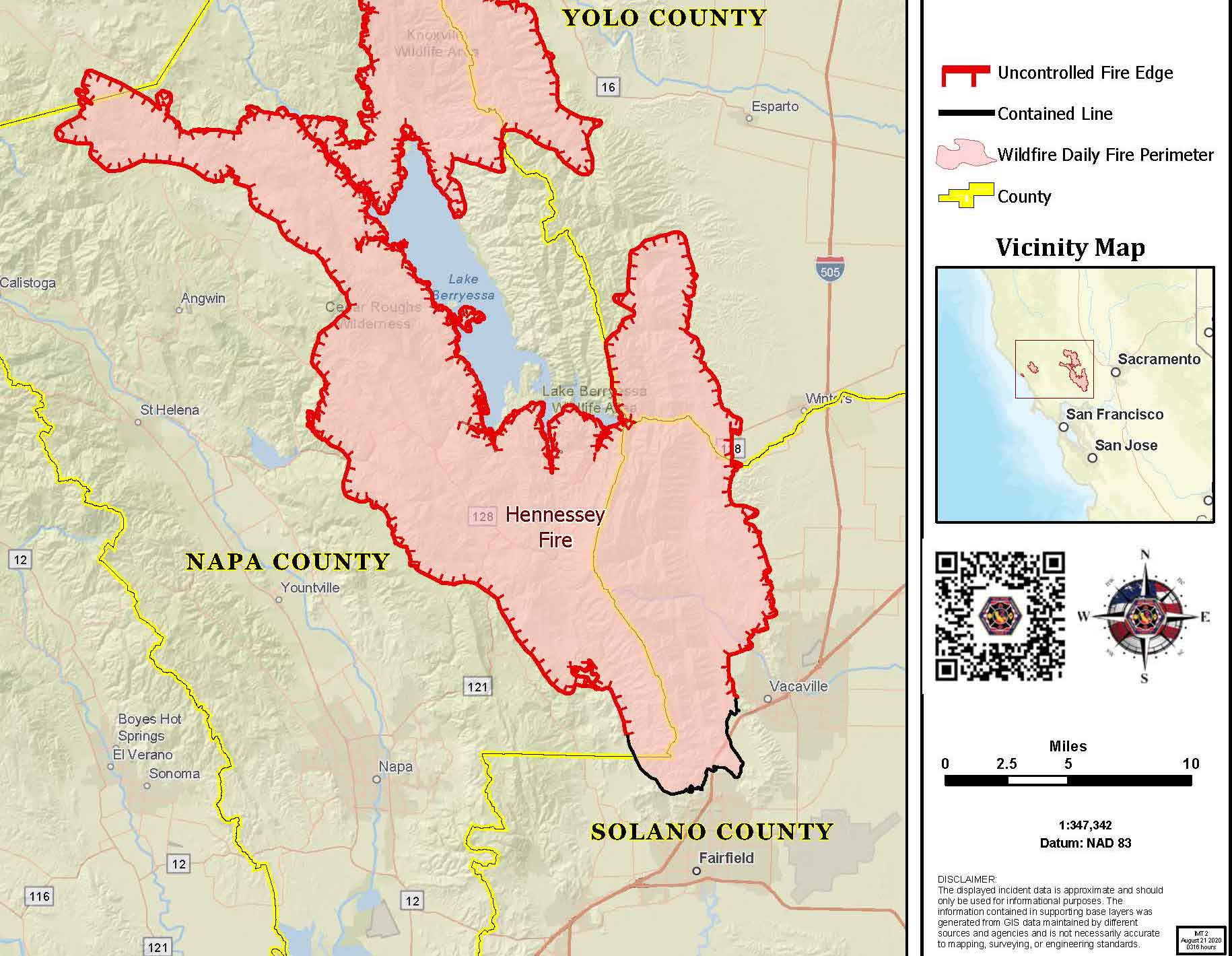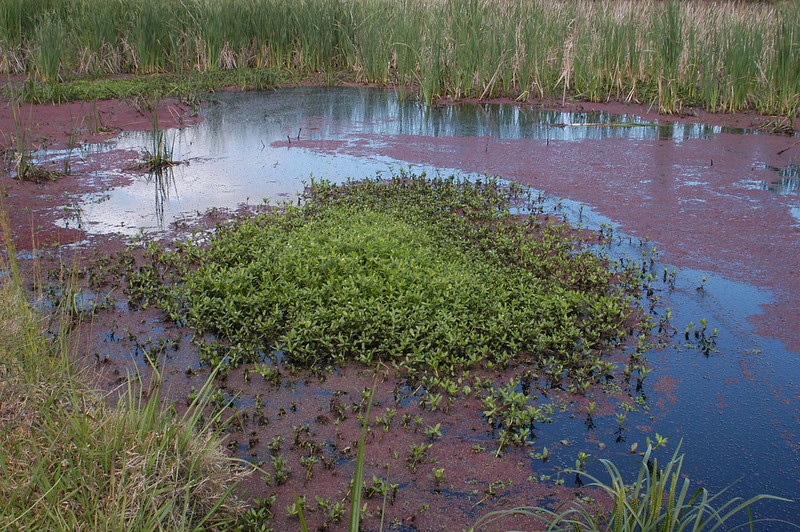
|
| SEPTEMBER 2020 NEWSLETTER |
Get Ready for the Fall Native Plant SaleOur gardens have been a welcome respite during this time of COVID-19. The Jepson Chapter is very pleased to offer an opportunity to obtain new plants grown at our Vallejo native plant nursery in time for the fall planting season. In this year of uncertainty and based on the experience with the Spring Native Plant Sale, we have decided to again offer our inventory of plants for purchase on-line with a credit card through the Jepson Chapter website. Contactless pick-up locations will be available in Benicia and Fairfield.
Achillea millefolium is one of the many plants available for purchase online during the Chapter's Fall Native Plant Sale. |
Visions of the Wild Festival Goes Virtual This is the time of year when our readers learn about what is happening at the annual Visions of the Wild Festival held every September in Vallejo. This year you will find something different from past festivals, but equally engaging. The 7th Visions of the Wild Festival will be an on-line exhibition of perspectives of life at 38°N, which is the circle of latitude (a.k.a. parallel) that is 38 degrees north of the Earth’s equatorial plane. This circle around the Earth crosses Wichita, Kansas; Louisville, Kentucky; Charlottesville, Virginia, the Azores Islands; Cordoba, Spain; Palermo, Sicily; Athens, Greece; Ashgabat, Turkmenistan; the Korean Demilitarized Zone; Fukushima, Japan; and Vallejo, California. This is the time of year when our readers learn about what is happening at the annual Visions of the Wild Festival held every September in Vallejo. This year you will find something different from past festivals, but equally engaging. The 7th Visions of the Wild Festival will be an on-line exhibition of perspectives of life at 38°N, which is the circle of latitude (a.k.a. parallel) that is 38 degrees north of the Earth’s equatorial plane. This circle around the Earth crosses Wichita, Kansas; Louisville, Kentucky; Charlottesville, Virginia, the Azores Islands; Cordoba, Spain; Palermo, Sicily; Athens, Greece; Ashgabat, Turkmenistan; the Korean Demilitarized Zone; Fukushima, Japan; and Vallejo, California.The on-line exhibits replace the physical festival that has been cancelled by its sponsors, the U.S. Forest Service and the Vallejo Community Arts Foundation, due to COVID-19. The Jepson Chapter has promoted this annual event because of its focus on California’s natural resources. This year the festival contrasts the Bay Area with other areas of the globe located at the same latitude. Its creative approach might be worth your attention. [READ MORE]
|
Second Responders Gear Up for the LNU FireThe Solano Resource Conservation District (RCD) is one of several “Second Responders” helping wildfire victims in Solano County figure out the road to recovery once the smoke clears from the 375,000 acre LNU Complex Fire. Their website offers services and resources to assist landowners with native vegetation and erosion issues created by wildfires. The resources include the Fire Recovery Guide published by the California Native Plant Society.
For Solano County, the LNU Complex Fire burned the Vaca Mountains and the adjacent hills and canyons north and west of Vacaville (see map). This burned area includes the county’s highest point, Mount Vaca, at 2,822 feet. The Napa-Solano Audubon Society produced a vegetation map in its publication, Breeding Birds of Solano County, which identifies seven different woodland and chaparral habitats impacted by this wildfire (see map). Wildfire impacts can vary by habitat. Chaparral, for instance, can decline severely if fires occur too frequently.
 Map from Cal Fire of the extent of the LNU Fire into Solano County as of August 21, 2020
|
Invasive Weeds !!! Who Ya Gonna Call???Local Weed Management Areas (WMA) bring together landowners and land managers in a county or other geographical area to join forces in combating local invasive weeds. The organization that manages the Solano County WMA is the Solano Resource Conservation District. A report on the most recent meeting of the Solano County WMA can be found here. California WMAs will have their annual statewide meeting online from 9 AM to Noon on October 27th, and you’re invited. The meeting is free and open to the public. Click here to register. The California Invasive Plant Council will host the meeting which will include:
 Alternanthera philoxeroides (Alligator weed) is a A-rated noxious weed by CDFA, first detected in Solano County's Montezuma Slough in 2017, was treated in 2018. New detections have indicated a wider ditribution in Solano County and the Delta. Photo courtesty of Doug Beckers via searchcreativecommons.org.
|
Native Plant News from Sister OrganizationsNew Invasive Weed Detected in Solano County: Page 5 of the June 2020 newsletter from the Suisun Resource Conservation District features an article on a new invasive plant Alligator weed (Alternanthera philoxeroides) first detected in Solano County in 2017. It threatens to displace native vegetation and hamper efforts to improve habitat for endangered salmon, and it is spreading. Eight Buckwheats from the East Bay Regional Parks Botanic Garden: The September 2020 newsletter of the Friends of the Regional Parks Botanic Garden, features an article on native buckwheats written by Earl Nickle. Buckwheat species range from southern Oregon in the north to the border of Mexico in the south. They occupy a range of habitats, from coastal dunes to chaparral to alpine meadows. There are 125 species in California alone. The newsletter describes eight buckwheats from the East Bay Regional Parks Botanic Garden in Berkeley that convey the range and appeal of this wonderful genus.
 Updates from the Solano Resource Conservation District: The July 2020 newsletterof the Solano Resource Conservation District has updates on the following projects for this past quarter:
|
PLANT OF THE MONTHAsarum caudatum (Western or Long-tailed ginger)Available at the Jepson Native Plant Sale October 1 through 8!!
This herbaceous evergreen perennial is a low groundcover with big, heart-shaped dark green leaves 2 to 4 inches long and up to 7 inches wide, which give off a spicy ginger-like scent when crushed. The delicate mauve flowers bloom April to July and are bell shaped, with three sepals that taper to a gracefully curved filament or “tail”, forming a three pointed star. These filaments, and the ginger-like smell, have caused some to call the plant “Long-tailed ginger”. The fruit, a globular capsule with large seeds, forms after the flower fades. It is native to the rich, moist forests from Santa Cruz County north to British Columbia, often blanketing the floor of Coast redwood and Mixed-evergreen forests from sea level to 5,000 feet.
Using Western Ginger in the Garden
Asarum caudatum likes part to full shade (more sun if on the coast) and moist soil, and needs regular water to look its best. It prefers slightly acidic soil and is sensitive to salt-laden irrigation water, but will tolerate clay. It spreads by rhizomes, can self-seed, and benefits from a covering of leaf mold in the fall. The spreading rhizomes make Western ginger a good choice for rock gardens and moist slopes. For a dense groundcover, divide rhizomes in fall or winter and include a few rooted nodes in each piece you replant. If you want luxuriant foliage with less water use, grow Western ginger in a large pot on a patio or balcony. Good companion plants for vertical interest include Pacific reedgrass, ferns, columbines, and large-leaved heucheras. These companion plants are available at the fall plant sale as well.
 Asarum caudatum (Western or Long-tailed ginger) photo by Paul Wilson via searchcreativecommons.org.
|
Calendar of Events
|

|
|
|
|
CNPS Statewide Website | Jepson Chapter Website |
